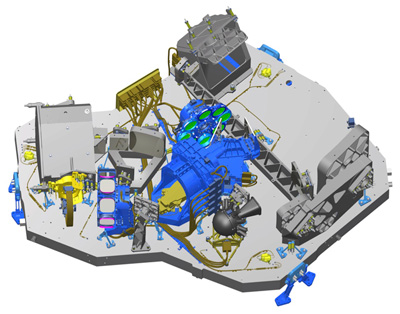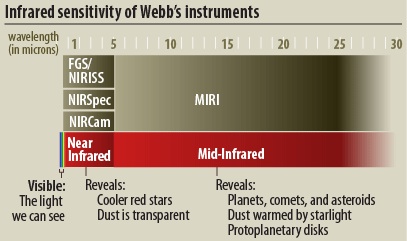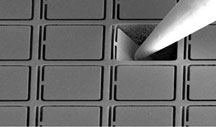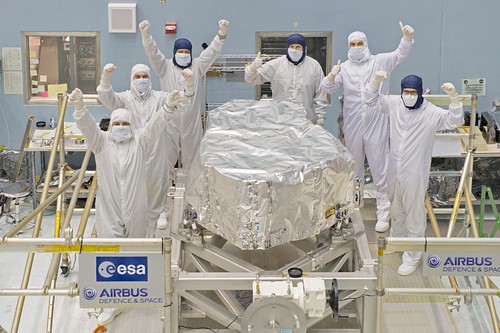The NIRSpec is designed to observe 100 objects simultaneously. The NIRSpec is the first spectrograph in space that has this remarkable multi-object capability.
NIRSpec


Near Infrared Spectrograph (NIRSpec)
The Near InfraRed Spectrograph (NIRSpec) operates over a wavelength range of 0.6 to 5 microns. A spectrograph (also sometimes called a spectrometer) is used to disperse light from an object into a spectrum. Analyzing the spectrum of an object can tell us about its physical properties, including temperature, mass, and chemical composition. The atoms and molecules in the object actually imprint lines on its spectrum that uniquely fingerprint each chemical element present and can reveal a wealth of information about physical conditions in the object. Spectroscopy and spectrometry (the sciences of interpreting these lines) are among the sharpest tools in the shed for exploring the cosmos.
Many of the objects that the Webb is studying, such as the first galaxies to form after the Big Bang, are so faint, that the Webb's giant mirror must stare at them for hundreds of hours in order to collect enough light to form a spectrum. In order to study thousands of galaxies during its 5 year mission, the NIRSpec is designed to observe 100 objects simultaneously. The NIRSpec is the first spectrograph in space that has this remarkable multi-object capability. To make it possible, Goddard scientists and engineers had to invent a new technology microshutter system to control how light enters the NIRSpec.
NIRSpec Innovations
One unique technology in the NIRSpec that enables it to obtain those 100 simultaneous spectra is a micro-electromechanical system called a "microshutter array." NIRSpec's microshutter cells, each approximately as wide as a human hair, have lids that open and close when a magnetic field is applied. Each cell can be controlled individually, allowing it to be opened or closed to view or block a portion of the sky.
It is this adjustability that allows the instrument to do spectroscopy on so many objects simultaneously. Because the objects NIRSpec is looking at are so far away and so faint, the instrument needs a way to block out the light of nearer bright objects. Microshutters operate similarly to people squinting to focus on an object by blocking out interfering light. (Read more about NIRSpec's microshutter technology.)
Video: NIRSPEC 3d Diagram Rotation
In DEPTH: Technical Details about NIRSpec

The NIRSpec enables scientists to obtain simultaneous spectra of more than 100 objects in a 9-square-arcminute field of view. It provides medium-resolution spectroscopy over a wavelength range of 1 to 5 micrometers and lower-resolution spectroscopy from 0.6 to 5 micrometers. The NIRSpec employs a micro-electromechanical system "microshutter array" for aperture control, and it has two HgCdTe detector arrays.
Other Resources:
- Space Telescope Science Institute has technical page on NIRSpec.
- Gallery of NIRSpec images
- Gallery of NIRSpec Microshutter images
- More about detectors in our instruments







